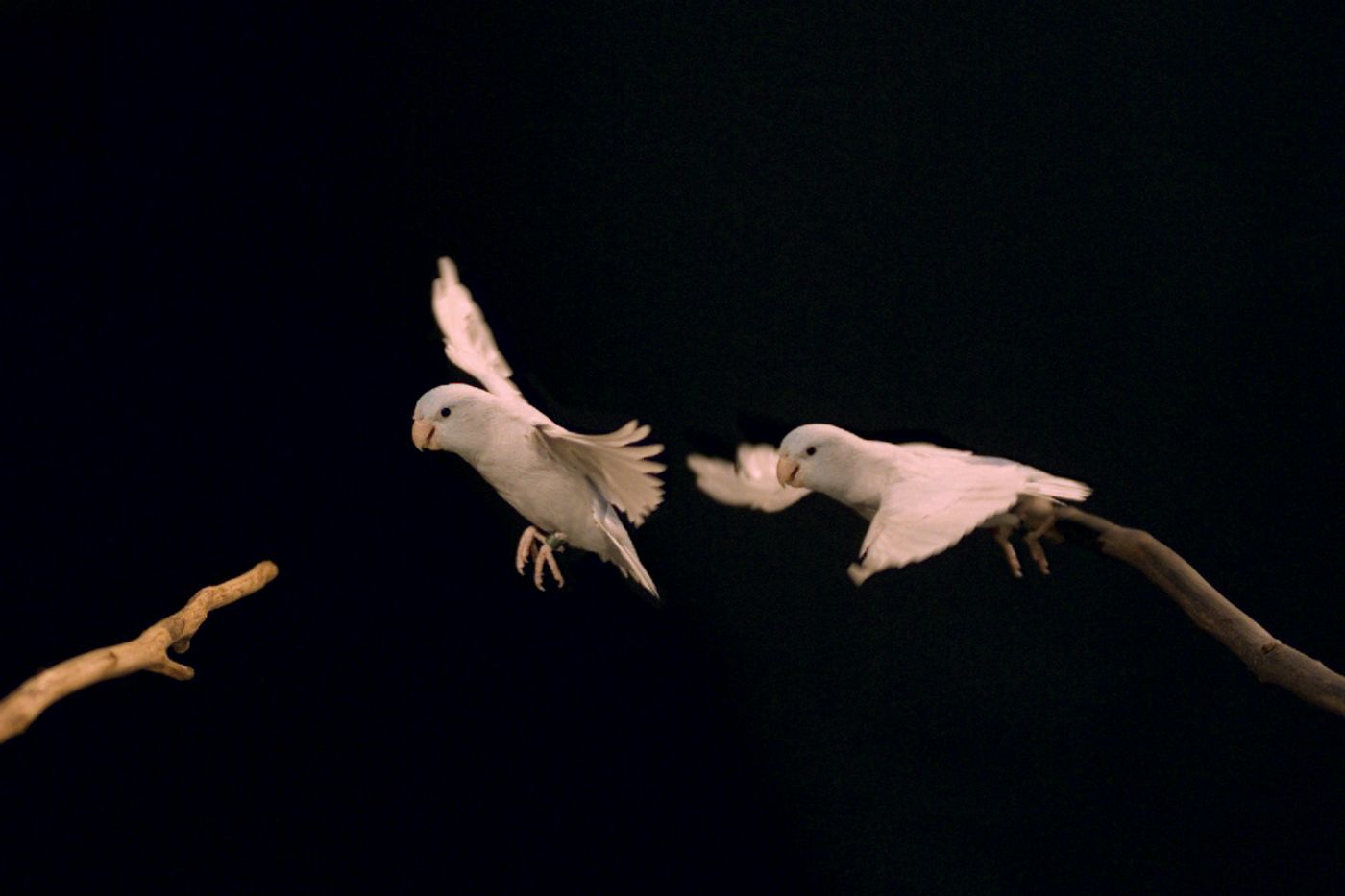Some Birds Save Energy By Jumping Instead of Flying
When you think of birds, the first thing that comes to mind is how they have wings and they fly. In fact, sometimes people associate even mechanical flying machines, like helicopters and airplanes, as “birds” simply because of their purpose of flight.
On the other hand, flight isn’t the only way birds get from point A to point B; a new study in the journal Science Advances reveals how some birds use methods of hopping and stepping to conserve energy while foraging for things like insects.
Image Credit: Diana Chin; Lentink Lab
In the case of tiny parrots, which were the main character in this study, the birds were observed by researchers as they carefully moved from branch to branch in trees every 30 seconds or so while looking for food. Rather than taking flight, however, they would hop from one branch to another.
Related: Flocks of birds use "beautiful" physics to save energy
If the branch was close enough, they wouldn’t even hop, they would just step over to it. And interestingly, when the branch was higher up than their current footing, they would beat their wings once or twice while jumping to gain height rather than taking on full-fledged flight.
“They are being very efficient with their jumps,” study lead author Dianna Chin from Stanford University notes. “It’s more efficient to push off with your legs than flap your wings. We saw that as a model of how these early birds, who couldn’t fly as well, developed their flights to get farther and farther.”
The research suggests that the tiny parrots may have adopted this behavior from their larger common ancestors, which means that perhaps the earliest bird species to walk the Earth learned this behavior as a means to conserve energy when food sources weren’t as common as today.
“This whole miniaturization would have helped them gain more and more from making these long jumps and adding in wingbeats,” Chin continued. “We saw this as a self-reinforcing mechanism that birds could use to improve their foraging flight skills by adding a bit more weight support with each wingbeat.”
The research goes on to show that perhaps it might be possible to use these physics to our own advantage in things like flying robotics. It may be possible to integrate energy savings to increase the battery life of flying machines.
Related: Study confirms that birds actually sleep while flying
Not only would these robots be more energy efficient, but they would gain an increased number of ways to get around besides flying, making them far more versatile in transportation.
Chin and her colleague(s) expect to continue their study with more bird species to see if this behavior is observed across the board or just with specific types of birds. It out to be interesting to see what they find.
Source: New Scientist









